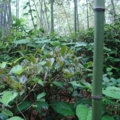Health - 3 and more stars - 4 and more stars
Tea by type
Tea by region
Tea by years and other
SeJak 2014 ECO Korea
 1 review
1 reviewKorean green tea picked in the spring of 2014 in Hadong district, Jiri mountains. Grown and produced by an organic, one of the best small tea companies making all-hand made tea in the area. The tea leaves were packed in the tea farm so that the very freshness is provided. The tea gives several, even 5-6 good tea brews. Its making (a way of producing it) preserves his freshness even for more that a year. SeJak 'grade' refers to one of the first flushes that is performed from April...
2013 Jinggu Da Bai Hao Hong Cha
 1 review
1 reviewJinggu area, it's famous for one of varietal tea trees – Da Bai Hao – “Big White tomentum”. The tea leaves and buds with dense white tomentum are larger than other tea variety. Its delicate aroma is sweet and appealing, its taste is thick mellow and unforgettable. This is one of highest Yunnan black tea production - first harvest, hand picked and highly selective process. Pleasant taste of Yunnan Hong Cha (black teas). The dry material - hairy aromatic long buds. Rich flavorful...
2011 CNNP Sheng Huo Fu Zhuan
 1 review
1 reviewThis Fu brick tea is made of 2rd grade mao cha by machine. It has been aging for 3 years to reproduce "golden flowers" in the tea. This is very prized and interesting tea. People have called it the golden flowers "Jin Hua". The Eurotium Cristatum is the dominant germ in the Fuzhuan, contributing to the special quality of the tea. Smooth and sweet with floral and dry fruits aroma in mouth with long and great aftertaste, "Jin Hua" arohid flavour - a true gift for tea lovers! Good for...
Theme
Quotes
„Yunnan Provincial Government has stipulated that for tea to qualify as Pu er it must be:
i) of the Broad Leaf variety (Sinensis Assamica)
ii) grown in the Lancang (Mekong) River region
iii) sun dried. The third point is important as there is much tea grown in the Lancang River area that is not sun dried.
There are also increasing amounts of Small Leaf Variety (Xiao Ye Zhong /小叶种) being grown in the Lancang River area.“
Latest posts
01.01.2016 @ 18:14:35 - Eternal Spring:
WeRateTea.com wish you all the best for 2016!...
07.12.2015 @ 09:07:02 - sypalino:
I decided to taste this tea 2 weeks after delivery. The cake is lightly pressed, so...
09.11.2015 @ 21:58:19 - Eternal Spring:
Comparison of 2013 Bada Pu-erh.sk with <a...
09.11.2015 @ 09:34:07 - Eternal Spring:
Lao Yu 2013 is now about 2,5 years old tea and out of this 1,5 year stored in Europe....
09.11.2015 @ 09:33:11 - Eternal Spring:
Comparison of all three Lao Yu is now done :)
15.10.2015 @ 11:06:37 - Eternal Spring:
2015 Chawangpu Collection – I can only tell, that all teas are very good :)
09.10.2015 @ 10:31:19 - Eternal Spring:
It was quite long and difficult tasting to make a decision… There is still quite...
24.01.2015 @ 16:55:57 - Eternal Spring:
WeRateTea.com wish you all the best for 2015!...
30.12.2014 @ 17:19:22 - Eternal Spring:
"FT(For Taiwan)" means this brick was a special order of "Fei Tai" Company. Fei Tai...
13.08.2014 @ 18:24:28 - Eternal Spring:
We compared two teas from Youle. 2005 Jinuo Shan You Le "Red Sun Drum" and 2009...
Tea by region
We will help you with tea selection.
Do you like quality loose tea?
We will help you to find the right one for you. Be inspired by tea ratings of other tea lovers. Rating stars could help you.


Review your cup of tea.
Review the tea you are drinking and help other tea lovers to find the right cup of tea.






 Shops
Shops












